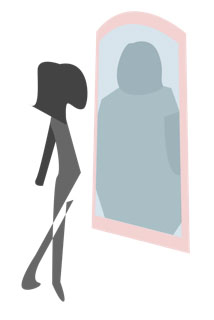Body image in Peninsula

 Thousands of teenagers in the U.S. are affected by eating disorders. Most common, Anorexia Nervosa, surfaces when people become obsessed over weight and refuse to maintain a healthy body weight and limiting calorie intake. Second most common disorder, Bulimia Nervosa, controls weight by vomiting or using laxatives. In Bulimia Nervosa, people binge eat, then purge, fast or excessively exercise. Studies show that over 50 percent of people who suffered from Anorexia develop Bulimia. These disorders often develop from bullying, peer pressure, and influence of the Medias “perfect image”.
Thousands of teenagers in the U.S. are affected by eating disorders. Most common, Anorexia Nervosa, surfaces when people become obsessed over weight and refuse to maintain a healthy body weight and limiting calorie intake. Second most common disorder, Bulimia Nervosa, controls weight by vomiting or using laxatives. In Bulimia Nervosa, people binge eat, then purge, fast or excessively exercise. Studies show that over 50 percent of people who suffered from Anorexia develop Bulimia. These disorders often develop from bullying, peer pressure, and influence of the Medias “perfect image”.
“Whether it is student or parent driven, everyone’s obsessed with the idea of being thin,” school nurse Wendy Keller said. “What is most important is to be healthy.”
Keller said being too thin affects your brain functioning which will lead to worsened performance in activities such as sports and studying. More than ten in every women suffer from eating disorders, and it often comes from perception of body image.
“I always see my friends doing things like counting calories or going gluten-free to stay thin,” senior Valerie Mizula said. “I feel like everyone is so self-conscious these days. It is sad to see my friends always dieting and being controlled by what they think is the right look.”
While teenagers often suffer from eating disorders leading to weight loss they can also experience the other extreme-obesity. U.S. researchers conducted a study at the University of Oklahoma Health Sciences Center which concluded that around 80% of teens have a bad diet and do not get enough exercise. These eating disorders can not only affect teenager’s adolescent years, but it can have a negative impact throughout their entire lives.
“High school is a time where you have a lot of stress to begin with, and I think that students who add eating issues to their plate have much more to deal with”, Marine Biology teacher Stephanie Peppermuller said.

